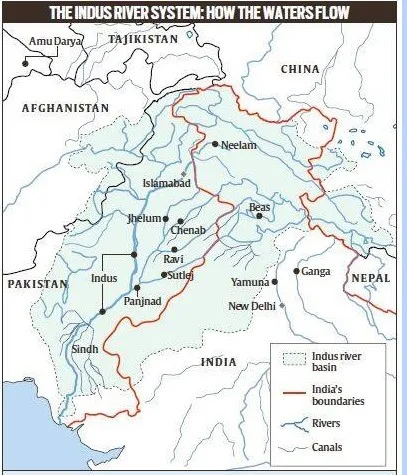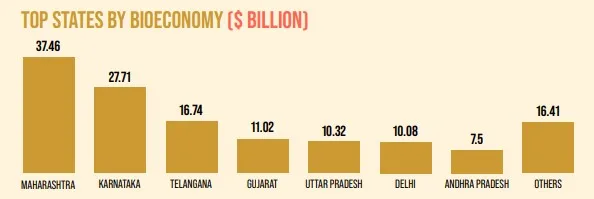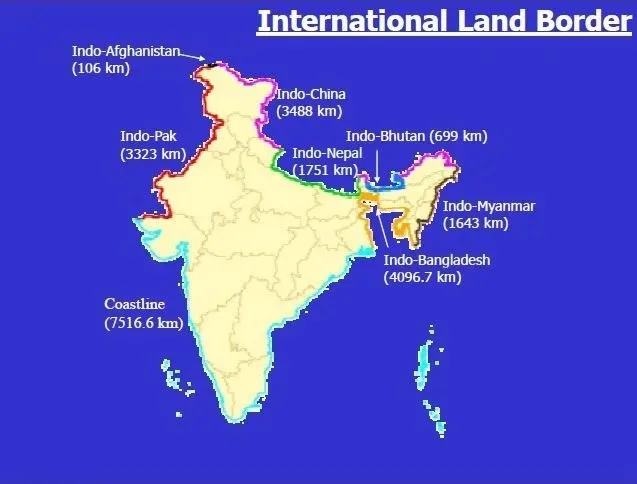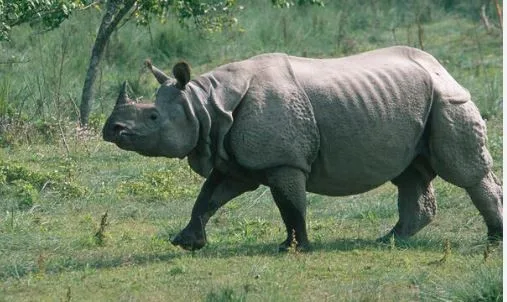UPSC DAILY CURRENT AFFAIRS (19TH SEPTEMBER, 2024)
Union Cabinet Approved One Nation, One Poll Proposal
Syllabus: GS2/Polity
Context
- The Union Cabinet unanimously approved the ‘one nation, one election’ proposal, paving the way for simultaneous elections for Lok Sabha, state Assembly and local bodies.
About
- The Union Cabinet has accepted the recommendations of the High-Level Committee on One Nation, One Election (ONOE), chaired by former President Ram Nath Kovind.
- The Committee has recommended a two-phase approach.
- The first phase involves holding Lok Sabha and Assembly elections simultaneously, while the second phase proposes conducting local body elections within 100 days of the general elections.
- The Cabinet also recommended creating a common electoral roll for all elections and setting up an implementation group to oversee detailed nationwide discussions.
- It has recommended 18 constitutional amendments, most of which will not need ratification by state assemblies. However, these would require certain Constitution amendment bills that would have to be passed by Parliament.
- The Bill is likely to be introduced in the Parliament in the upcoming winter session.
What are Simultaneous Elections?
- Simultaneous Elections (One Nation One Election) refer to the idea of holding Lok Sabha and State legislative assembly elections together, with the aim of reducing the frequency of elections and their associated costs.
- Simultaneous elections in India to the Lok Sabha and State Legislative Assemblies were held in the years 1951-52, 1957, 1962 and 1967.
- Thereafter, the schedule could not be maintained and the elections to the Lok Sabha and the State legislative assembly have still not been realigned.
Arguments In Favour of One Nation One Election
- Reduced Expenditure: It will reduce the huge expenditure incurred for conducting separate elections every year.
- Streamlined Process: Managing one election cycle is logistically simpler than conducting multiple elections at different times. This can lead to more efficient use of administrative resources.
- The problem of frequent elections leads to imposition of Model Code of Conduct (MCC) over prolonged periods of time which affects the normal governance. Simultaneous elections can overcome such issues.
- The focus on governance will increase, instead of being constantly in election mode.
- Direct Accountability: With simultaneous elections, voters can hold parties accountable for both central and state governance at the same time, making it clearer how local and national policies impact their lives.
Arguments Against One Nation One Election
- Logistical Challenges: All states and the central government face massive logistical challenges including coordinating the schedules, resources etc.
- Local Priorities: It may help the dominant national party at the cost of regional parties and regions issues can be overshadowed by the national issues.
- Complex Reforms Needed: Implementing simultaneous elections would require significant constitutional amendments and changes to existing electoral laws, posing legal complexities.
Way Ahead
- Synchronized polls for all 3 tiers of government will improve governance architecture. It will enhance “transparency, inclusivity, ease and confidence of voters.
- Separately, the law commission is also likely to come up soon with its own report on simultaneous elections.
- The law commission is likely to recommend holding simultaneous polls for all three tiers of the government – the Lok Sabha, state assemblies and local bodies like municipalities and panchayats – starting 2029.
Pradhan Mantri Janjatiya Unnat Gram Abhiyan (PMJUGA)
Syllabus: GS2/ Governance
Context
- The Union Cabinet approved Pradhan Mantri Janjatiya Unnat Gram Abhiyan for improving the socio-economic condition of tribal communities.
About
- The outlay of the scheme is Rs.79,156 crore (Central Share: Rs.56,333 crore and State Share: Rs. 22,823 crore).
- It will cover around 63,000 villages benefitting more than 705 tribal communities as announced in the Budget Speech 2024-25.
- India has Scheduled Tribe population of 10.45 crore as per 2011 census and there are more than 705 tribal communities.
- The Mission comprises 25 interventions which will be implemented by 17-line ministries.
- Each Ministry/Department would be responsible for implementation of scheme related to it through funds allocated to them under Development Action Plan for Scheduled Tribes (DAPST) in next 5 years to achieve following goals:
- Goal-I: Pucca house for eligible Households with other entitlements and Improving Village infrastructure,
- Goal-2: Promotion of Economic Empowerment by Skill Development Entrepreneurship promotion and enhanced livelihood(self-employment),
- Goal-3: Universalization of Access to Good Education,
- Goal-4: Healthy lives and Dignified Ageing.
Promotion of schemes under PMJUGA
- Tribal Home Stay: To tap the tourist potential of tribal areas and to provide an alternate livelihood to the tribal community, 1000 Home stays will be promoted under Swadesh Darshan through the Ministry of Tourism.
- Sustainable Livelihood Forest Right Holders (FRA): It intends to bring sustainable agricultural practices to all Forest Rights Act (FRA) patta holders to enable them for maintenance and conservation of forest
- Improving infrastructure of Govt residential Schools and Hostels: The Abhiyan aims to Improve infrastructure of Ashram schools/hostels/Tribal schools /Govt residential schools for upgradation on the lines of PM-Shri Schools.
- Tribal Multipurpose Marketing Centre (TMMCs): For Effective marketing of tribal products and for improving marketing infrastructure, awareness, branding, packaging, and transportation facilities 100 TMMCs will be set up
- Advanced facilities for diagnosis of Sickle Cell Disease.
India Sent Notice to Pakistan to Review Indus Water Treaty
Syllabus: GS2/IR
Context
- India has sent a formal notice to Pakistan, seeking the “review and modification” of the Indus Water treaty (IWT).
About
- The latest notice is issued under Article XII (3) of the IWT, signaling India’s intent to revoke and renegotiate the 64-year-old treaty.
- Article XII (3) states: “The provisions of this Treaty may from time to time be modified by a duly ratified treaty concluded for that purpose between the two Governments”.
- The two notifications come amidst a prolonged controversy over the construction of two hydel power projects by India in Jammu & Kashmir — one on Kishanganga, a tributary of Jhelum, in Bandipora district, and the other (Ratle Hydroelectric Project) onChenab in Kishtwar district.
- Both are “run-of-the-river” projects, meaning they generate electricity (330 MW and 850 MW respectively) using the natural flow of the river, and without obstructing its course.
- However, Pakistan has repeatedly alleged that both these projects violate the IWT.
The Indus Water Treaty
- The Indus Water Treaty was signed in 1960 between India and Pakistan after nine years of negotiations arranged by the World Bank.

- It governs the management and use of the Indus River system.
- Water Allocation: The treaty allocates the waters of the three eastern rivers (Beas, Ravi, and Sutlej) to India and the three western rivers (Indus, Chenab, and Jhelum) to Pakistan.
- The treaty gave India about 30% of the water carried out by the Indus Rivers Systemn while Pakistan got 70% of the waters.
- Permanent Indus Commission: The treaty established a commission to facilitate communication and cooperation between the two countries regarding water management.
- Dispute Resolution: Provisions are included for addressing disputes, primarily through consultation and negotiation.
- According to the treaty, there is a sequential, three-level mechanism where disputes are first decided at the level of the Indus Commissioners of the two countries, then escalated to the Neutral Expert who is appointed by the World Bank, and only then escalated to the Hague-based Permanent Court of Arbitration (PCA).
- Development Projects: India is allowed to develop hydroelectric projects on the western rivers, provided they do not affect Pakistan’s water supply.
Concerns for India
- There is a significantly altered population demographics, coupled with connected agricultural and other uses of the waters.
- There is a need to accelerate the development of clean energy to meet India’s emission targets.
- It is the impact of persistent cross-border terrorism in Jammu and Kashmir which has impeded the smooth operations of the Treaty and undermined full utilization of India’s rights.
- The Indian Government has also asserted that the dispute resolution mechanism of the Treaty requires reconsideration.
Way Forward
- The Indus Waters Treaty is considered one of the most successful water-sharing endeavours in the world today.
- However, there is a need to update certain technical specifications and expand the scope of the agreement to address climate change.
Bio-RIDE Scheme to Support R&D in Biotechnology
Syllabus: GS3/Science and Technology
Context
- The Union Cabinet approved the Biotechnology Research Innovation and Entrepreneurship Development (Bio-RIDE) scheme to support cutting-edge research and development in biotechnology.
About
- Bio-RIDE combines two existing schemes — Biotechnology Research and Development (R&D) and Industrial and Entrepreneurship Development (I&ED) — with a new component, Bio-manufacturing and Bio-foundry.
- The outlay for the implementation of the scheme is Rs.9197 crore during the 15th finance Commission period from 2021-22 to 2025-26.
- Implementation of Bio-RIDE Scheme will;
- Promote Bio-Entrepreneurship: Bio-RIDE will nurture a thriving ecosystem for startups by providing seed funding, incubation support, and mentorship to bio-entrepreneurs.
- Advance Innovation: The scheme will offer grants and incentives for cutting-edge research and development in areas like synthetic biology, biopharmaceuticals, bioenergy, and bioplastics.
- Facilitate Industry-Academia Collaboration: Bio-RIDE will create synergies between academic institutions, research organizations, and industry to accelerate the commercialization of bio-based products and technologies.
| Biotechnology – Biotechnology deals with the application of biological knowledge and techniques pertaining to molecular, cellular and genetic processes to develop significantly improved products and services. – The Biotechnology industry in India is divided into the following segments – Biopharmaceuticals, Bio-services, Bio-agriculture, Bio-Industrials and Bio-IT. |
Status of Biotechnology in India
- India ranks 3rd in the Asia-Pacific region and 12th globally in terms of biomanufacturing.
- Biotechnology, a sunrise sector, has achieved a valuation of Rs 75,000 crore over the past 10 years.
- The Indian Biotechnology industry was valued at $93.1 billion in 2022, with expectations of reaching $300 billion by 2030.
- In the Global Innovation Index, India has climbed from 81st place in 2015 to 40th out of 132 economies in 2023.
- In 2022, BioEconomy accounted for 4% of India’s gross domestic product (GDP) of $3.47 trillion and employs over 2 million people.

Government Initiatives
- Biotechnology Industry Research Assistance Council (BIRAC) established by the Department of Biotechnology (DBT) is aimed at strengthening and empowering emerging biotechnology enterprises to undertake strategic research and innovation.
- Policy initiatives of the Government of India (GoI) such as Startup India and Make in India programs are aimed to develop India as a world-class Biotechnology and Bio-manufacturing hub.
- Favorable Government Policies like Draft R&D Policy 2021, PLI Schemes and Clinical trial rules have propelled India to be the ‘pharmacy of the world’.
- FDI Policy: 100% FDI is allowed under the automatic route for greenfield pharma. Also 100% FDI is allowed under the government route for brownfield pharma.
- Up to 74% FDI is under the automatic route and beyond 74% is under the government approval route.
Concluding remarks
- The Bio-RIDE scheme is designed to foster innovation, promote bio-entrepreneurship, and strengthen India’s position as a global leader in biomanufacturing and biotechnology.
- It aims to accelerate research, enhance product development, and bridge the gap between academic research and industrial applications.
Sanctioning of ₹31000 Crore for Myanmar Border Fencing
Syllabus: GS3/ Internal Security
Context
- The Union government has approved the construction of border fencing and roads along the border between India and Myanmar at an approximate cost of ₹31,000 crore.
International Border of India
- India currently has more than 15000 km of land borders and more than 7500 km of maritime borders.

- It shares land borders with seven countries including Afghanistan, Pakistan, China, Nepal, Bhutan, Bangladesh and Myanmar. The borders with the countries are as;
- Bangladesh: 4096.70 kms running along West Bengal, Assam, Meghalaya, Tripura and Mizoram.
- Pakistan: 3323 kms running along Gujarat, Rajasthan, Punjab, Union Territory of Jammu & Kashmir and Union Territory of Ladakh.
- China: 3488 kms running along Arunachal Pradesh, Sikkim, Uttarakhand, Himachal Pradesh and the Union Territory of Ladakh.
- Nepal: 1751 kms running along Uttarakhand, Uttar Pradesh, Bihar, West Bengal and Sikkim.
- Bhutan: 699 kms running along Sikkim, West Bengal, Assam and Arunachal Pradesh.
- Myanmar: 1643 kms running along Arunachal Pradesh, Nagaland, Manipur and Mizoram.
- Afghanistan: 106 kms running along the Union Territory of Ladakh.
Need for Managing the Borders
- Porosity of Borders: Many parts of India’s borders are porous, allowing illegal crossings of people, goods, and contraband such as drugs and weapons.
- Cross-Border Terrorism: India faces threats of cross-border terrorism, particularly from Pakistan-based militant groups operating in Jammu and Kashmir.
- Ethnic and Tribal Dynamics: India’s border regions are inhabited by diverse ethnic and tribal communities with historical, cultural, and social ties across borders.
- Managing these communities’ aspirations, addressing their grievances, and preventing their exploitation by external forces require nuanced approaches to border management.
- Dispute over Borders: India has unresolved border disputes with neighboring countries, most notably with China and Pakistan.
- These disputes lead to occasional tensions and confrontations, necessitating constant vigilance and diplomatic efforts to maintain peace and stability along the borders.
- Infrastructure Development: Many border areas in India lack basic infrastructure such as roads, communication networks, and border outposts, hampering the effectiveness of border management efforts.
- Humanitarian Concerns: India shares borders with countries experiencing political instability, humanitarian crises, and refugee influxes.
India’s border management
- Border Infrastructure Development: The Border Roads Organisation (BRO) has constructed over 8,500 kms of roads and more than 400 permanent bridges.
- Atal Tunnel, Sela Tunnel and Shikun-La Tunnel, which is going to be the world’s highest tunnel, will prove to be milestones in border area development.
- Trans-Arunachal Highway is a strategic project to enable quick and effective response against potential aggression by China.
- Border Monitoring: Construction of fences, floodlights, roads, Border Out Posts (BOPs), and Company Operating Bases (COBs) for constant surveillance and rapid response to threats.
- Security Measures: Central Armed Police Forces (CAPFs), under the Ministry of Home Affairs (MHA), guard borders in peacetime.
- The Indian Army takes charge of border security during active hostilities to defend against external aggression.

- Border Area Development Programme (BADP): Launched in 1986-87 for the balanced development of border areas in states bordering Pakistan—Jammu & Kashmir, Punjab, Gujarat, and Rajasthan—later extended to all land borders.
- Vibrant Villages Programme (VVP): Approved in 2023 for the comprehensive development of selected border villages in Arunachal Pradesh, Himachal Pradesh, Sikkim, Uttarakhand, and Ladakh.
- Cross-Border Trade: Construction of integrated checkposts and trade facilitation centers has streamlined customs clearance and reduced trade barriers.
- However the Union Home Ministry recently scrapped the Free Movement Regime (FMR) along the Myanmar border, which allowed local residents to travel 16 km into each other’s territory without documents.
Way Ahead
- India’s evolving approach to border management is a mix of security measures, infrastructure development, and strategic cooperation with its neighbors.
- The continuous development of border regions, enhanced surveillance, and improved trade facilities reflect the country’s commitment to ensuring national security while fostering regional prosperity.
Developments in Spintronics
Syllabus :GS 3/Science and Tech
In News
- Researchers have made a significant breakthrough in spintronics, achieving the generation of spin currents in just 2 femtoseconds (fs) using a new method called optical intersite spin transfer (OISTR).
About Spintronics
- Spintronics stands for spin transport electronics
- It is a cutting-edge field that harnesses the intrinsic spin of electrons.
- Unlike traditional electronics that rely solely on charge (electrons’ movement), spintronics exploits both charge and spin properties.
Applications
- Magnetic Hard Drives: Spintronics has transformed hard drive technology.
- Giant magnetoresistive heads (GMR heads) enable higher data densities and faster read/write speeds.
- A laptop’s hard drive owes its efficiency to spintronics.
- Giant magnetoresistive heads (GMR heads) enable higher data densities and faster read/write speeds.
- MRAM (Magnetoresistive Random-Access Memory): MRAM combines the best of both worlds: non-volatility (like flash memory) and speed (like RAM).
- It stores data using electron spins, making it a promising candidate for future memory devices.
- It’s increasingly being adopted in consumer electronics, servers, and automotive applications.
- It stores data using electron spins, making it a promising candidate for future memory devices.
- Quantum Computing : Spin qubits—quantum bits based on electron spins—could revolutionize quantum computers.
- They offer longer coherence times and scalability compared to other qubit technologies.
Recent Developments
- Current spintronic devices already utilize electrons’ magnetic properties, but improvements have stalled due to limitations in read/write speeds.
- The researchers engineered a layered material composed of cobalt and platinum, applying two laser pulses: a 4 fs pulse of linearly polarized light to excite the electrons, followed by a pulse of circularly polarized light to assess the resultant spin ordering.
- They observed a slight decrease in spin order in cobalt layers and an increase in platinum layers, indicating a spin current transfer.
- This proof of concept demonstrates that ultrafast lasers can directly induce spin currents within femtosecond timescales, paving the way for the development of next-generation spintronic devices capable of operating at even faster rates, potentially in the attosecond range.
Benefits
- Speed: Spintronic devices can operate at higher speeds than conventional electronic components, enabling faster data processing and transfer.
- Power saving : Spintronic devices can achieve non-volatile memory, meaning they retain information even when power is turned off.
- This characteristic can lead to significant energy savings in data storage and computing.
- Data: Spintronic technology has the potential to store more data in smaller spaces
- Enhanced Functionality: Spintronics allows for the development of novel devices that combine logic and memory functions, leading to faster and more efficient computing architectures.
Challenges
- Many spintronic effects are highly sensitive to temperature fluctuations.
- Efficiently injecting spin-polarized electrons into a nonmagnetic material is challenging.
- Achieving high spin injection efficiency without causing excessive resistance or energy losses is an ongoing research area.
- Spin currents tend to decay over relatively short distances.
- External magnetic fields, impurities, and defects can introduce noise and interfere with spintronic devices.
Conclusion and Way Forward
- Spintronics represents a paradigm shift in understanding and utilizing electronic materials.
- By harnessing the power of electron spin, this innovative technology offers a pathway to faster, more efficient, and more versatile devices. As we move further into the digital age, spintronics could play a crucial role in shaping the future of electronics, paving the way for new applications that will enhance daily lives and drive technological progress.
- The field is rapidly advancing, with ongoing research and development in both academic and industrial settings.
- As scientists and engineers continue to explore the intricacies of electron spin, spintronics is poised to revolutionize the landscape of electronics.
FACTS IN NEWS
NPS Vatsalya Scheme
Syllabus: GS3/Financial Inclusion
Context
- The Finance Minister has launched the NPS Vatsalya scheme.
About
- Introduced in the Union Budget 2024-25, NPS Vatsalya is a new initiative under the National Pension System designed for long-term investments by parents and guardians on behalf of their minor children.
- It is a centrally sponsored scheme launched by the Ministry of Women and Child Development.
- The Pension Fund Regulatory and Development Authority (PFRDA) manages the scheme.
- Key attributes of the Vatsalya NPS account:
- Eligibility criteria: Any minor, having PAN card and Aadhar card, who is under the age of 18 is eligible.
- Minimum contribution: A minimum of Rs 1,000 per year can be contributed with no limit on maximum contribution.
- Contributors to the scheme: Parents/guardians can contribute on behalf of their children.
- Transition after the age of 18: The minor’s NPS account will transition to a standard NPS account, post the submission of required KYC documents.
- Partial withdrawals allowed after 3 years for education, health, and disability up to 25% of corpus
National Centre of Excellence for AVGC-XR
Syllabus: GS3/Infrastructure
Context
- The Union Cabinet cleared the proposal of establishing the National Centre of Excellence (NCoE) for Animation, Visual Effects, Gaming, Comics and Extended Reality (AVGC-XR) in Mumbai.
About
- The Federation of Indian Chambers of Commerce & Industry and the Confederation of Indian Industry will be partners with the Government for this project.
- Tentatively named the Indian Institute for Immersive Creators (IIIC), this hub is set to transform the AVGC sector and drive innovation in immersive technologies.
- The IIIC is designed to be a premier institution offering state-of-the-art infrastructure and technology.
- The centre will provide specialised training in immersive technologies, including Virtual Reality (VR), Augmented Reality (AR), Mixed Reality (MR), and 3D modelling and animation.
- Significance: The centre aims to generate around 5 lakh jobs.
- By offering world-class infrastructure and specialised skills, the NCoE will build a strong talent pool and create significant opportunities for employment and innovation.
Pradhan Mantri Annadata Aay SanraksHan Abhiyan (PM-AASHA)
Syllabus: GS3/ Agriculture
Context
- The Union Cabinet has approved the continuation of schemes of Pradhan Mantri Annadata Aay SanraksHan Abhiyan (PM-AASHA).
About
- The total financial outgo will be Rs. 35,000 crore during 15th Finance Commission Cycle up to 2025-26.
- The Government has converged the Price Support Scheme (PSS) & Price Stabilization Fund (PSF) schemes in PM AASHA to serve the farmers and consumers more efficiently.
- PM-AASHA will now have the components of Price Support scheme (PSS) ,Price Stabilization Fund (PSF) , Price Deficiency Payment Scheme (PDPS) and Market Intervention Scheme (MIS).
- The extension of Price Stabilization Fund (PSF) scheme will help in protecting consumers from extreme volatility in prices of agri-horticultural commodities by maintaining strategic buffer stock of pulses and onion for calibrated release; to discourage hoarding, unscrupulous speculation; and for supplies to consumers at affordable prices.
| PM-AASHA Scheme – The scheme is an umbrella scheme to ensure Minimum Support Price (MSP) to farmers. – It comprises the erstwhile Price Support Scheme (PSS) with certain modifications and rolling out of new schemes of Price Deficiency Payment Scheme (PDPS) and pilot of Private Procurement and Stockist Scheme (PPSS). – Under PM-AASHA, States/UTs are offered to choose either PSS and PDPS in a given procurement season with respect to particular oilseeds crop for the entire State. – Further, states have the option to roll out PPSS on pilot basis in district/selected APMCs of district involving the participation of private stockists for oilseeds. |
Greater one-horned Rhino
Syllabus: GS3/ Species In News
In News
- The International Rhino Foundation (IRF) published its ‘State of the Rhino’ report, highlighting positive developments for the Greater One-Horned Rhino.
About
- The population has increased by 20% over the past decade, now exceeding 4,000 rhinos.
- Conservation efforts have led to better management of rhino habitats and the creation of wildlife corridors, ensuring safer movement and protection for the species.
- This growth reflects successful conservation programs and habitat restoration efforts across rhino habitats, particularly in India and Nepal.
Greater one-horned rhino
- Habitat: The grasslands and wetlands located in the foothills of the Himalayas and the Brahmaputra and Ganges valley.
- The Great one horned rhino is commonly found in India, Nepal, and Bhutan.
- In India they are found in Kaziranga National Park and Manas National Park in Assam, Pobitora reserve forest in Assam (having the highest Indian rhino density in the world), Orang National park of Assam, Laokhowa reserve forest of Assam and Royal Chitwan National Park in Nepal.
- Protection Status:
- IUCN Status: Vulnerable
- Schedule I of WildLife Protection Act
- CITES Appendix I

